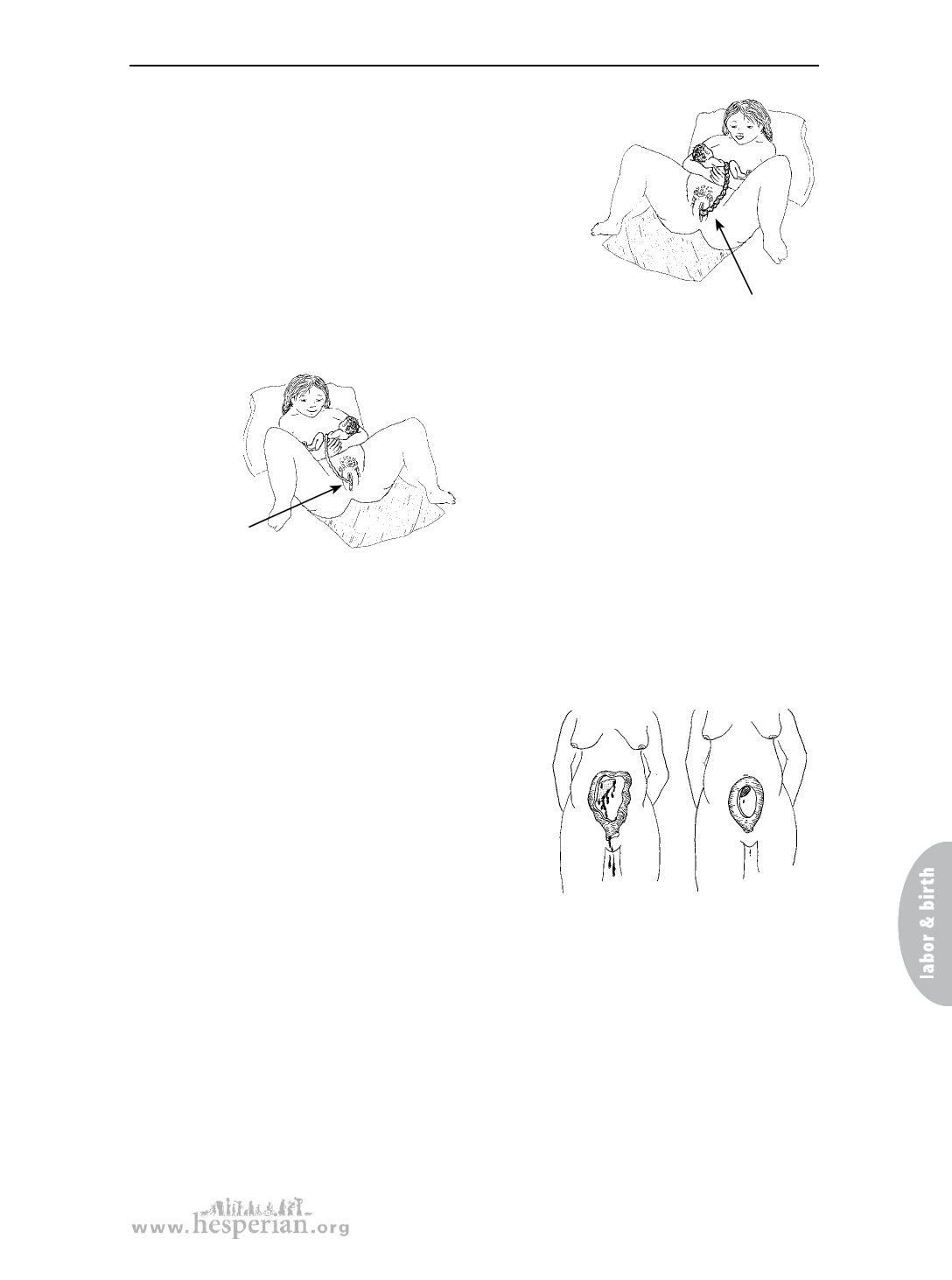
Care for the mother during labor
The birth of the placenta
Just after the baby is born (stage 3) she learns to breathe.
The placenta separates from the womb and is pushed
out of the vagina. For more about stage 3, see
Chapter 13, “The birth of the placenta.”
When the baby is first born, she is still connected
to the placenta inside the mother by her cord.
The blood from the placenta gives the baby a
few minutes to start breathing. Soon the baby
can breathe on her own and no longer needs
the placenta.
Cord is thick, blue, and pulsing
— it is still passing blood to
the baby. Do not cut.
The placenta usually separates from
Cord is thin,
white, and
not pulsing —
it is not sending
blood to the
the wall of the mother’s womb in the
first few minutes after birth. With a
couple of pushes, the placenta will
usually come out of the vagina and the
baby must breathe on her own.
baby. OK to cut.
The first few hours
In the first few hours after the birth of the placenta, the mother starts to recover
from the birth, and the baby begins to adjust to the outside world.
The place where the placenta was attached to
the womb starts to tighten and close, and the
mother’s bleeding slows down. The mother’s
womb will become firm. She might feel strong
contractions after the birth. These contractions
are healthy, and help to stop the bleeding.
The baby should start to breastfeed. She
should urinate, and may pass her first stool.
Care for the mother during labor
This part of the chapter explains the ways that a midwife can support, guard,
and guide a birth to make it safer and easier. The ideas in this section are useful
during all the stages of labor and birth.
The 3 chapters after this one will explain more specific ways to help in each
stage of labor and birth.
157
A Book for Midwives (2010)